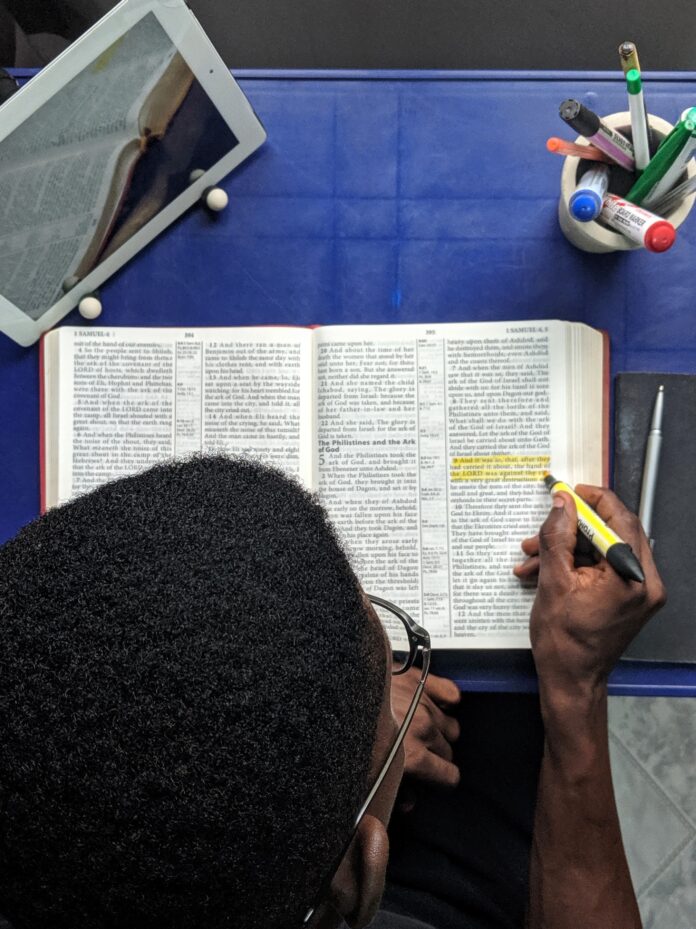
By Nadia Reese
Recently, schools across the country have begun banning books on topics such as religion, “witchcraft,” sexuality, police brutality and racism from the classroom and pulling them from school libraries. It is no surprise that most of the books that made the banned book list are written by Black authors and focus on topics relating to issues and experiences within the Black community.

The Color Purple
“The Color Purple” by Alice Walker is a novel set in 1900s Georgia and is narrated by Celie, the main character and protagonist, as she details her experiences with her family, including her mother, her abusive father, and her sister Nettie. Though the story teaches women that they can be resilient in any situation with support from other women, the book was pulled from the shelves due to homosexuality, violence, and explicit language. Between 1984 and 2013, the book was banned from school libraries across the United States. Then, Texas State Prisons banned the book for profanity and violence in 2017.
The Bluest Eye

“The Bluest Eye” was written by award-winning author Toni Morrison in 1970. The novel takes place between 1940 and 1941 in Lorain, Ohio, which is also Morrison’s hometown. “The Bluest Eye” tells the story of a girl named Pecola Breedlove, who comes from a family considered to be troubled, unhappy, and ugly due to the color of their skin. Many of the characters in the novel are Black or of mixed ancestry and long to be white. Though this novel was banned due to racism, the treatment of women, and obscenity, it is important for students who deal with the same insecurities as Pecola to read this story. The story was listed as No. 2 on the American Library Association’s list of the most challenged books in 2013 and again in 2014. It was banned in Montgomery County, Maryland, after a mother described the book as being too “lewd.” Then it was banned in other schools and counties in states, such as Florida, Colorado, New Hampshire, Michigan, North Carolina, Indiana, and California.
Go Tell it on the Mountain
“Go Tell it on the Mountain,” written by novelist James Baldwin, is set in 1935 in Harlem, New York, and tells the story of a Black teenager named John Grimes, who is described as intelligent by peers and teachers. The novel is based on James Baldwin’s own experiences, as he also grew up in Harlem. In the novel, Grimes comes from a religious family and centers around his view on religion. Though the premise of “Go Tell it on the Mountain” centers on intellect and religion, this text was banned because of racism, violence, explicit sex, references to rape, treatment of women, and profanity. The novel was banned in Prince William County, Virginia, in 1988 and in Hudson Valley, New York, in 1994.

Native Son
American author Richard Wright’s novel “Native Son” takes place on the South Side of 1930s Chicago and revolves around a 20-year-old Black man known as Bigger Thomas, who is described as illiterate and impoverished. Bigger goes through a life where racial prejudice is prevalent and where he believes that he has no control over his life. Unfortunately, Bigger deals with his struggles with anger, stress, and fear. Although he is not the typical protagonist, he is the definition of what a “native son” is, which is made up of the racism and violent culture within American society. Although “Native Son” was banned because of sex, violence, and profanity, it’s beneficial for students to relate to a character. “Native Son” was banned from Irvington High School in California after parents complained about its violent and sexual content.
And Still I Rise
The inspirational poem “And Still I Rise” by Maya Angelou shares the oppression and strength of minorities, most specifically Black women. The book also features other poems, such as “Remembrance” and “Phenomenal Woman.” The words in Angelou’s poem are meant to instill confidence as Angelou describes how she rises above obstacles. However, the book of poems was banned due to its sexual content. The book was challenged after complaints about its sexual content were made by parents from several school districts.

The Hate U Give
“The Hate U Give” was published in 2017 by author Angie Thomas. The story focuses on the topics of police brutality and institutional racism as it tells the story of Starr, a teenager who navigates two different worlds as she attends an elite school while living in an underprivileged community. However, Starr is a witness to the death of her childhood friend Khalil, who is killed by a police officer. Readers are able to see Starr stand up against racism and challenge the criminal justice system, and so this book was banned in part of the idea that “The Hate U Give” spoke against police officers. In 2017, it was also banned in Katy, Texas, due to the use of profanity.
This Is Your Time
Ruby Bridges is a civil rights activist who is better known for being the first Black child to attend a predominantly white elementary school in New Orleans. Bridges wrote “This Is Your Time” in the form of a letter to the reader. Her letter lists and describes the experiences that Bridges went through as a child as she attends her newly integrated school. “This Is Your Time” was banned for racism even though the purpose of her story was to encourage readers to take action in standing up for their community.
A Lesson Before Dying
“A Lesson Before Dying” by Ernest J. Gaines centers around a 21-year-old named Jefferson who lives in the fictional town of Bayonne, Louisiana, in the late 1940s. Jefferson is an uneducated Black field worker who is wrongfully accused of robbing and murdering a white man. The lesson before dying was given to him by a teacher known as Grant Wiggins, who volunteers to prepare Jefferson for his death. His last lesson would be to “never give up.” The purpose of “A Lesson Before Dying” was to teach readers to value their lives even at the time of death. The novel was banned in Savannah, Georgia, in 2001 for violence, sexual content, and language.
Their Eyes Were Watching God
“Their Eyes Were Watching God” by author and educator Zora Neale Hurston focuses on the roles of men and women. The story is set in early 20th-century Florida, and it follows the story of Janie Mae Crawford, who is described as an independent Black woman. In 1997, the text was banned after a parent of a Virginia high school student complained about its obscenity and sexual content.

The Autobiography of Malcolm X
Published in 1965, ‘‘The Autobiography of Malcolm X” was co-authored by journalist Alex Haley and tells the life story of activist and religious leader Malcolm X. The reader is able to view his leadership and the racism he endured throughout his childhood and comprehend the Black American experience.
Banning books for racism and other “inappropriate” topics that may be affecting other students is not the answer. In order to teach students and to prevent what happened in the past, it’s important to have difficult conversations. Racism, violence, and abuse still stand in today’s society. However, allowing others to learn from another person’s story can encourage the next generation to combat these issues.


